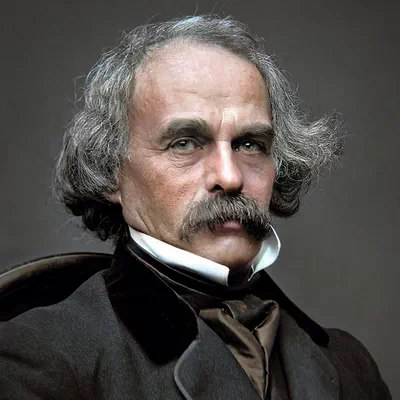Does Hawthorne accept the moral ideas of Puritans, especially regarding adultery
Nathaniel Hawthorne, a prominent American author of the 19th century, is often associated with the exploration of Puritan themes in his works. While he was deeply influenced by the Puritanical roots of his ancestors, his attitude towards their moral ideas, particularly regarding adultery, remains complex.
Puritan Moral Ideals in The Scarlet Letter
The Scarlet Letter, one of Hawthorne’s best books, provides a critical analysis of Puritan morality, sin, and salvation. The protagonist of the tale is Hester Prynne, a woman condemned for adultery in a Puritan society. The scarlet letter “A” she is forced to wear serves as a symbol of her transgression, and the novel reads as a reflection on the consequences of breaking Puritan moral codes.
While Hawthorne portrays the harsh judgment and condemnation faced by Hester, there is an underlying critique of the Puritanical rigidity that enforces these moral ideals. Hester’s journey becomes a symbol of individual defiance against a repressive society. Hawthorne neither explicitly endorses nor condemns the Puritanical stance on adultery but uses the narrative to question the unforgiving nature of societal norms.
Does Hawthorne accept the moral ideas of Puritans, especially regarding adultery-The character of Arthur Dimmesdale, the clergyman involved in the adulterous affair with Hester, further complicates Hawthorne’s exploration of Puritan morality. Dimmesdale grapples with guilt and inner turmoil, questioning the effectiveness of the Puritanical system in dealing with human frailty. Hawthorne, through Dimmesdale’s internal struggles, suggests a skepticism towards the absoluteness of Puritan moral ideals.
Ambiguity in Young Goodman Brown
Hawthorne continues to explore Puritan morality in “Young Goodman Brown,” especially when it comes to moral ambiguity and the effects of a rigid, judgmental society. The narrative follows the title character, Goodman Brown, as he travels through the forest and comes across a variety of characters, including members of his Puritan community, who stand in for temptation and evil.
The narrative is saturated with symbolism, and the forest becomes a metaphor for the hidden, darker aspects of human nature. Hawthorne does not explicitly endorse or condemn the Puritan moral ideas but rather underscores the complexity of morality and the dualities inherent in human behavior.
Also Read-
- How did Henrik Ibsen contribute to the growth of modern American drama
- What were the prominent themes that captured the imagination of writers of short fiction
- House Made of Dawn Summary and Themes
Does Hawthorne accept the moral ideas of Puritans, especially regarding adultery-Goodman Brown’s experience in the forest blurs the lines between reality and the supernatural, leaving readers to question the reliability of Puritan moral judgments. The ambiguity in the narrative suggests Hawthorne’s skepticism regarding the black-and-white nature of Puritanical ideals, emphasizing the potential for hypocrisy and hidden transgressions within a seemingly righteous society.
Hawthorne’s Critique of Hypocrisy and Judgment
In both “The Scarlet Letter” and “Young Goodman Brown,” Hawthorne subtly critiques the hypocrisy and judgment prevalent in Puritanical society. The public shaming of Hester Prynne in “The Scarlet Letter” and the revelation of the hidden sins of seemingly devout individuals in “Young Goodman Brown” highlight Hawthorne’s concern with the gap between outward appearances and internal realities.
Hawthorne’s portrayal of Puritanical moral ideals suggests a recognition of the flaws inherent in a system that rigidly enforces a particular code of conduct. The emphasis on public morality often masks the private struggles and transgressions of individuals, leading Hawthorne to question the effectiveness and fairness of Puritanical judgment.
Hawthorne’s Personal Connection and Ambivalence
Nathaniel Hawthorne’s own family was descended from Puritans, and some of his ancestors were significant figures in the Salem witch trials. His complex and conflicted depiction of Puritan moral principles was probably influenced by this personal relationship. Hawthorne criticized Puritanism’s excesses and the possibility of oppression within such a moral framework, even though he recognized the historical significance of Puritanism in forming American culture.
Does Hawthorne accept the moral ideas of Puritans, especially regarding adultery-Hawthorne’s ambivalence toward Puritan moral ideas is evident in his exploration of the consequences of adultery in both works. Instead of presenting a clear moral stance, he invites readers to consider the complexities of human nature and the challenges of adhering to rigid moral codes.

